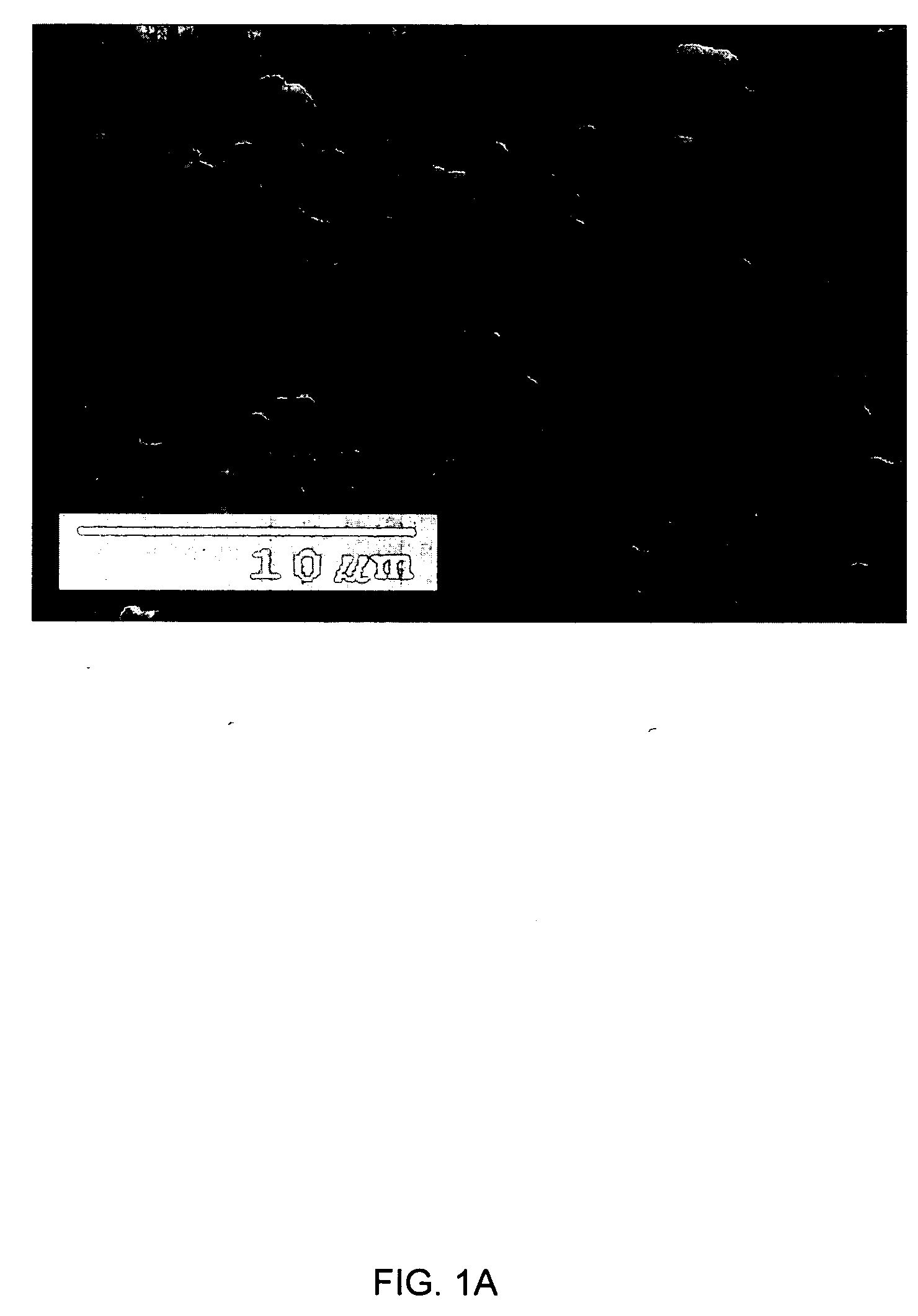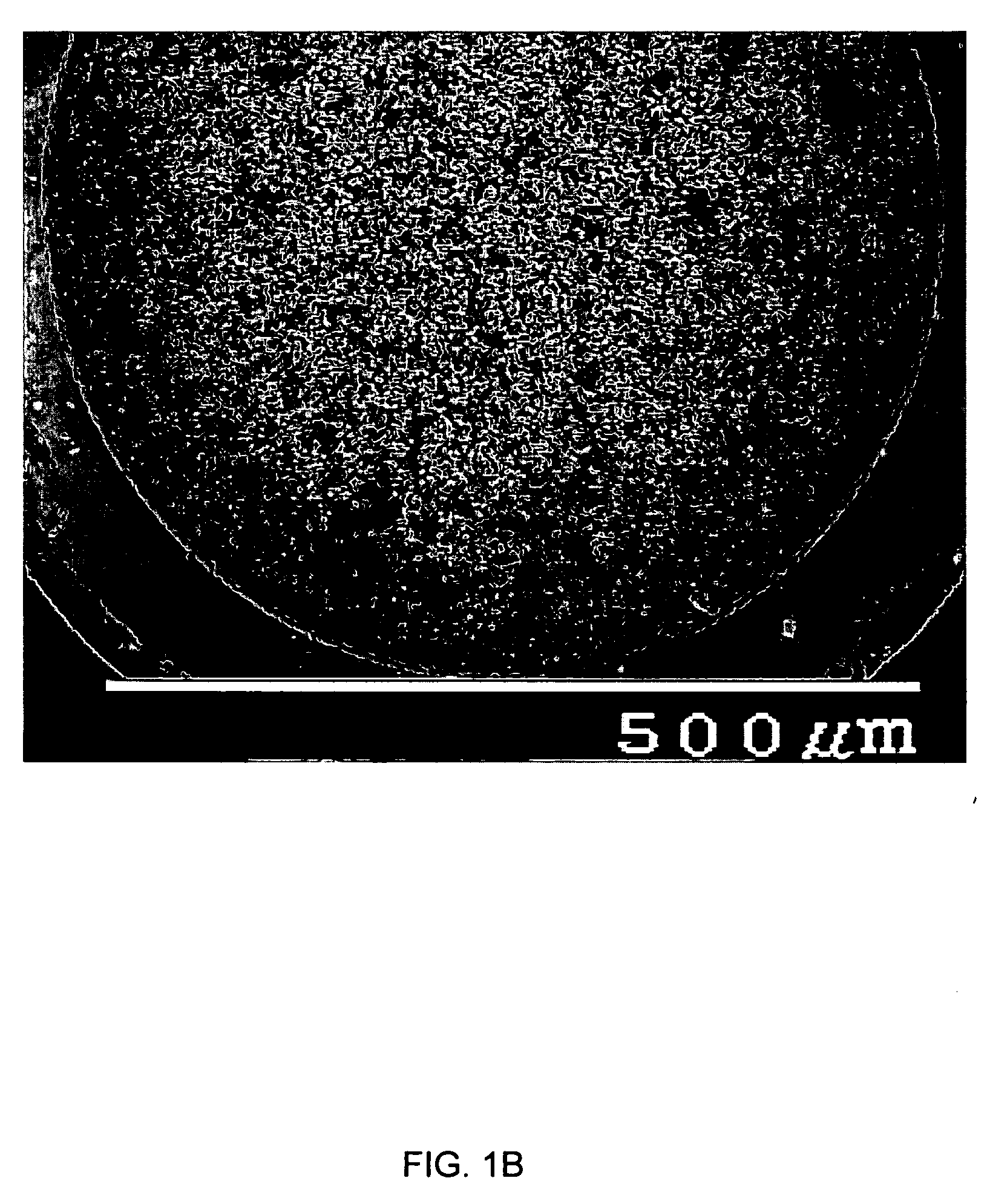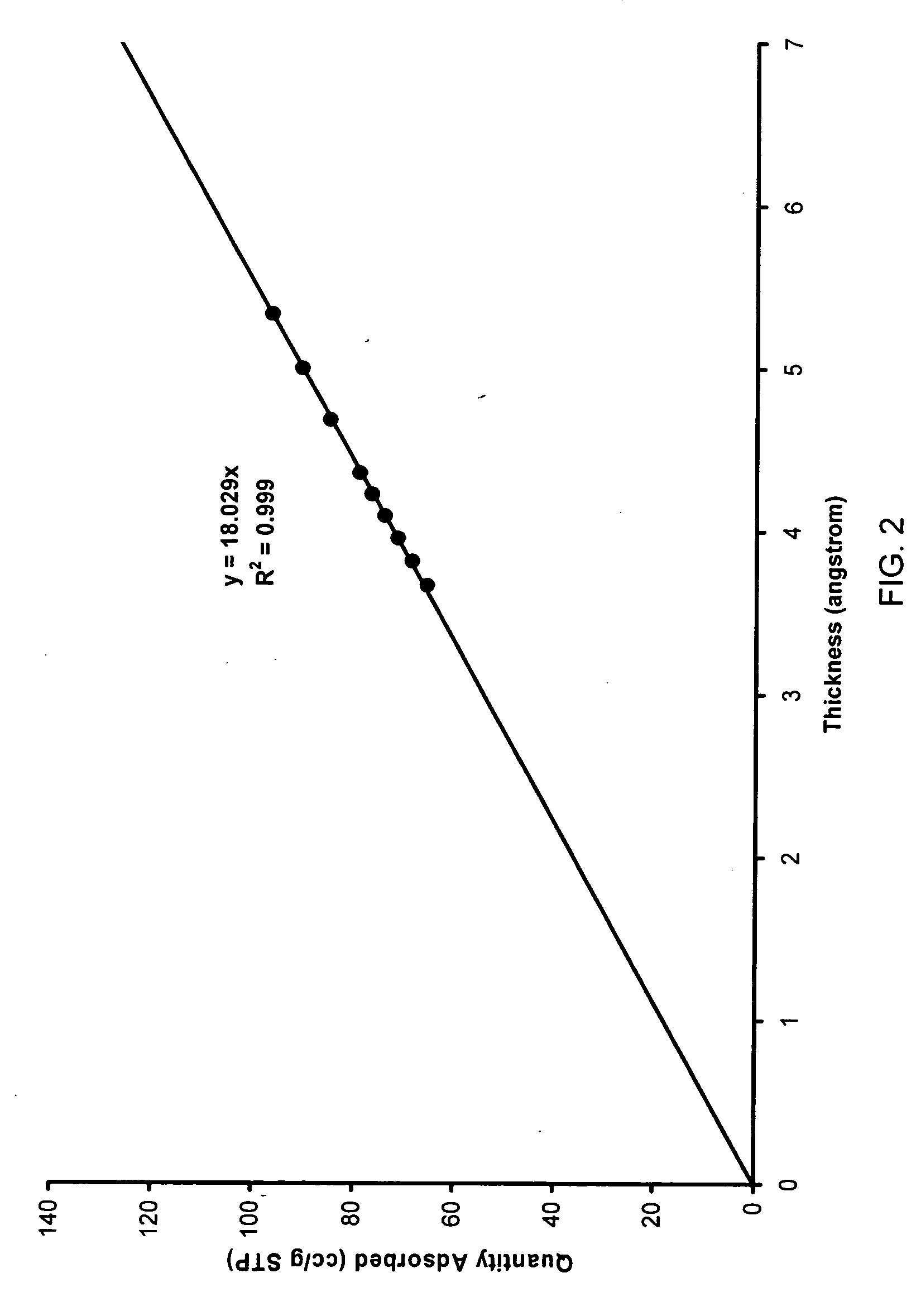Ultraporous sol gel monoliths
a sol gel and monolithic technology, applied in the field of sorbents, can solve the problems of degrading the quality of the gel produced, insufficient processing time, and process not producing enough macropores, and achieve the effects of cost saving, superior sorbents, and superior sorbents
- Summary
- Abstract
- Description
- Claims
- Application Information
AI Technical Summary
Benefits of technology
Problems solved by technology
Method used
Image
Examples
example 1
Formation of a Sol Gel Monolith without Micropores
Preparation of the Sol Gel:
[0102] Polyethylene glycol (PEG)(1.1 g, MW 20,000) was dissolved in the mixture of 2.5 g hydrofluoric acid (HF, 1.2 M) and 4.3 g methanol. While stirring, tetraethoxysilane (TEOS, 5.6 g) was introduced into the solution and formed a uniform mixture. Five minutes later, the mixture was cast into test tubes and kept at 5° C. The sols became white gels after half an hour, which were then dried and calcined for 10 hours at a temperature of 600° C. FIG. 1A shows a scanning electron microscopic (SEM) image (×3000) of the gel structure. The SEM photomicrograph confirms that the sol gel has an ultraporous monolithic structure.
Characterization of the Sol Gel:
[0103] Using a Micromeritics TriStar 3000 (Norcross, Ga.), the BET surface area was determined to be 531 m2 / g, mesopore volume was 1.13 cc / g and mesopore mode diameter was 102 Å, as shown in FIG. 4. t-Plot analysis indicated virtually no micropores. The to...
example 2
Formation of an Inorganic Sol Gel Monolith
[0105] In a similar experimental design to that described in Example 1, PEG (1.06 g, MW 10,000) was dissolved in a solution mixture of methanol (4.31 g), water (1.33 g) and hydrofluoric acid (HF, 1.16 g, 2.6 M). While stirring, TEOS (5.60 g) was introduced into the mixture and formed a uniform solution. After 5 minutes, the sol was cast into test tubes and kept at 5° C. About 30 minutes later, all sols became white gels, which were dried and calcined at 600° C. The total pore volume was measured to be 4.6 cc / g using a mercury intrusion test. Nitrogen absorption was done on Micromeritics TriStar 3000, BET surface area was 290 m2 / g, the mesopore mode diameter was 162 Å, as shown in FIG. 5, and the mesopore volume was 1.50 cc / g (P / P0=0.98). Virtually no micropores were detected using t-plot, as shown in FIG. 2
example 3
Formation of an Inorganic Sol Gel Monolith
[0106] PEG (0.71 g, MW 20,000) was dissolved in a solution mixture of methanol (2.87 g), ethanol (1.65 g), water (0.88 g) and hydrofluoric acid (HF, 0.77 g, 2.6 M). While stirring, tetraethoxysilane (TEOS, 3.74 g) was introduced into the mixture and formed a uniform solution. After 5 minutes, the sol was cast into test tubes and kept at 25° C. About 40 minutes later, all sols became white gels, which were dried and calcined at 600° C. The total pore volume was measured to be 5.0 cc / g using a mercury intrusion test. Nitrogen absorption was performed using a Micromeritics TriStar 3000, and the BET surface area 452 m2 / g, the mesopore mode diameter was 142 Å, and the mesopore volume was 1.34 cc / g (P / P0=0.98). Virtually no micropores were detected using t-plot.
PUM
| Property | Measurement | Unit |
|---|---|---|
| porosity | aaaaa | aaaaa |
| porosity | aaaaa | aaaaa |
| temperature | aaaaa | aaaaa |
Abstract
Description
Claims
Application Information
 Login to View More
Login to View More - R&D
- Intellectual Property
- Life Sciences
- Materials
- Tech Scout
- Unparalleled Data Quality
- Higher Quality Content
- 60% Fewer Hallucinations
Browse by: Latest US Patents, China's latest patents, Technical Efficacy Thesaurus, Application Domain, Technology Topic, Popular Technical Reports.
© 2025 PatSnap. All rights reserved.Legal|Privacy policy|Modern Slavery Act Transparency Statement|Sitemap|About US| Contact US: help@patsnap.com



